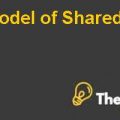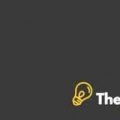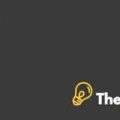INTRODUCTION
Starbuck Corporation is an international coffeehouse chain based in Seattle, Washington, United States. Starbucks was founded in 1971 had grown from a single location to a multibillion-dollar enterprise. The company operated in more than 17,000 retail stores in 50 countries, including 11,000 in the United States, 1000 in Canada and more than 800 in Japan. By 1982, the company had five retail outlets that sold beans and supplies for brewing coffee and had established a wholesale business. Howard Schultz is the president and CEO of the Starbucks. Mr. Schultz first came with the concept of the espresso bar when he was visiting Milan, and realized the need of high quality coffee and comfortable setting in America, where people can meet and relax.
In the beginning of 1996, Starbucks achieved its maximum profits and customers’ expansion by executing two initiatives that were selling Starbucks’ products through mass distribution channels and expanding its retail foot prints. The company also markets books, music and film to gain competitive edge. Starbucks’ ice-cream and coffee are also offered in grocery stores. Starbucks’ Italian style coffee, espresso bar, teas, pastries, and confections had made the company one of the greatest retaining stores (Koehn 2002).
PROBLEM IDENTIFICATION
According to the case, the company initiated a strategy to move into new market expansion, to increase its growth. However, the company has to decide on a vertical integration related to its expansion into consumer packaged goods. Moreover, the company is facing competition threat from both higher and lower quality entrants. The biggest competitors of the Starbucks are Folgers, Maxwell House, and Nescafe. Moreover, other big competitors are fast food restaurants, such as, McDonald’s and Dunkin Donuts. As a result, the company has closed nearly 1,000 stores, due to under performance in the competitive environment.
However, the company should develop a strategy to continue to manifest itself into a great and enduring company. The case addresses the multiple challenges that Starbucks is facing in order to expand its new market expansion to gain an aggressive growth in a highly competitive environment. Furthermore, the case is about the competition and in order to propose a strategy, it is important to conduct an in-depth analysis of the case, in order to solve questions and drive possible solution. However, the analysis conducted will help to identify the right recommendations.
ANALYSIS
Q.1: In the beginning, how was Starbucks different from other coffee options in the United States?
The objective of the company is to roast and sell quality coffee to its customers, and to gain competitive advantage. When Starbucks started its business as a coffee consumption in the United States, it was nearly on the declining stage. Despite of huge competition from Folgers, Maxwell and Nescafe, Starbucks has five retail outlets that sell beans and supplies for brewing coffee at home. Howard Schultz, CEO of the Starbucks realized the need of high quality coffee and comfortable setting in America. Moreover, he wants to differentiate and create an identity by keeping the national coffee culture live.
Mr. Schultz stated that getting into the restaurant business will distract the core business and activities of the company, such as roasting and selling coffee beans. The activities and assets that leverage Starbucks to differentiate from the competitors such as the decor of the stores include earth tones, overstuffed chairs, wood floors, and cozy fireplaces attract more customers and provide them a relax ambiance. Moreover, La Marzocco machines added value to the distinct taste of the coffee and Barista that operated the machine develop a unique attraction for customers.
Starbucks A Story Of Growth Case Solution
Furthermore, Starbucks selected its target markets very carefully and only selected areas with a large number of wealthy and highly educated professional workers. Therefore, drinking Starbucks coffee is seen as cool, sophisticated, and only something rich people could afford. This strategy added value in the brand image and the power of the company. Besides that, Starbucks invented a quasi-Italian lingo for its drink sizes, to make the product more attractive and effective. Starbucks positioned itself as a brand that offers a lifestyle product. Lastly, the company sets the prices of the products based on the purchasing power and also at their competitor’s coffee outlets (Chatterton 2003).
Q.2: What did Starbucks gain and give up as a result of each change?
In the beginning of 1996, Starbucks was concurrently implementing two initiatives, such as, selling Starbucks products through mass distribution channels, and radically expanding its retail foot prints. The company has opened a number of stores in different years, such as, in 1996, opened about 1,000 stores, by 2001, expand 5,000 stores, and by 2007, operated 15,000 stores and in the same year publicly announced a goal to open 40,000 locations worldwide..................
This is just a sample partial case solution. Please place the order on the website to order your own originally done case solution.











